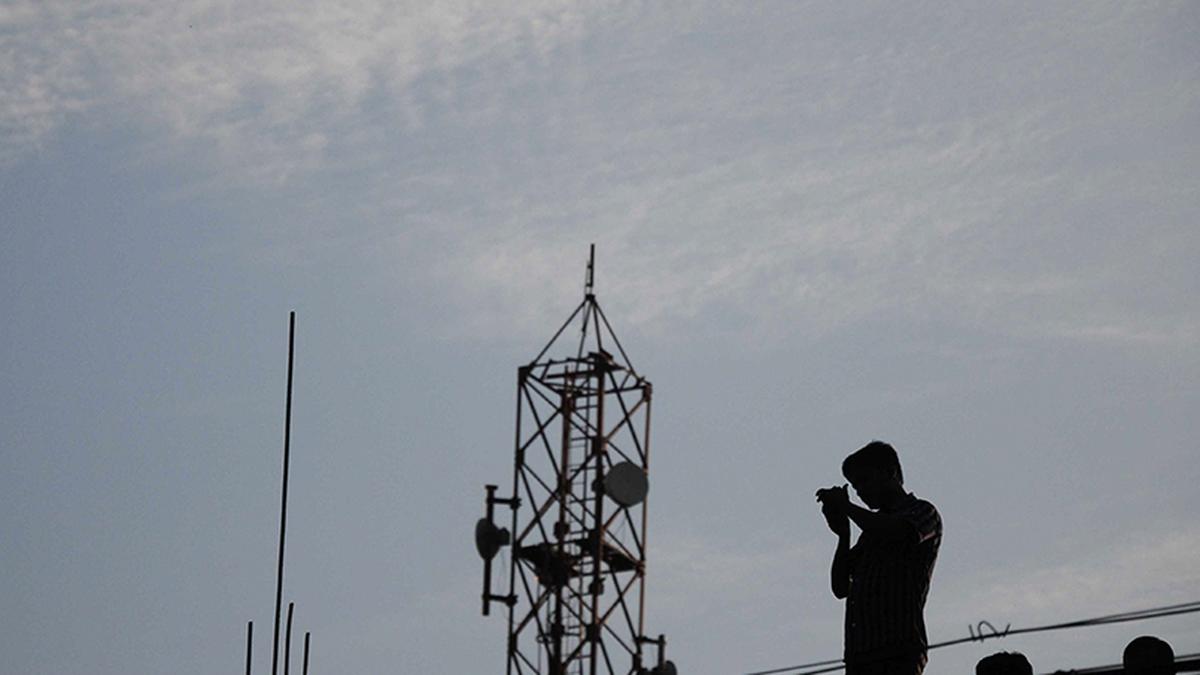Enhancing coverage, speed and accessibility is pivotal for effective implementation and ensuring seamless service delivery. This ambitious goal can be achieved through collaborative efforts between the Government and industry, bolstered by supportive policies that foster a sustainable ecosystem benefiting all stakeholders.
| Photo Credit: MUSTAFAH KK
Over the past decade, India has achieved remarkable progress in digital connectivity and local manufacturing, propelled by the ambitious policy reforms aimed at raising India’s status as a leading digital economy in the world. And, thanks to these efforts, India is today the third-largest digitised country in the world, after USA and China. Telecommunications infrastructure acts as the cornerstone of these developments providing connectivity across myriad devices and applications, thus contributing to a higher standard of living and overall economic growth.
The telecom industry has submitted a few policy recommendations to the Ministry of Communications, which are crucial for achieving the Government’s vision of digital empowerment and inclusivity. These recommendations are vital to create a favourable environment for the growth of the telecom sector and ensure that the interests of both telecom operators and consumers are addressed.

Firstly, the government should consider the industry’s recommendations for reducing the levy and tax burden experienced by the operators for several years. These include the longstanding demands for abolishing the USOF levy, as well as reducing the licence fee from 3% to 1%. Another important recommendation is related to gross revenue (GR). There is an ambiguity in the current definition of GR, which leads to imperfect calculation of taxes pertaining to non-telecom activities. Operators demand that the revenue from activities for which no licence is required should not be a part of GR.
The industry strongly urges the Government to exempt Service Tax on additional AGR liabilities imposed by the Supreme Court’s judgment. These recommendations are essential for the recovery of the industry’s financial health, ensuring efficient 5G rollout and sustaining the sector’s growth and competitiveness. Besides, reduction of Customs Duty to zero and gradually increase for the manufacturing ecosystem, especially for 4G and 5G products, is desirable. Telcos also urge for exemption of GST under Reverse Charge Mechanism (RCM) on payments made to DoT for licence fee, spectrum usage charges and spectrum acquired in auctions. At the same time, with the current Customs Duty exemption for submarine cable vessels set to expire in September, it would be crucial to prevent an increase in cable-laying costs in the future.
Another major recommendation is pertaining to the prioritisation of 6 GHz spectrum for 5G in India. A recent report by GSMA says India can save as much as $10 billion annually in 5G network deployment through the use of 6 GHz spectrum. This spectrum reserve is also crucial for India to advance in the 6G era. The industry urges the Government to strategically plan the 6 GHz resources for 6G as well. The availability of 6 GHz will significantly enhance the quality and coverage of the mobile network in India. It will not only boost the growth of data usage but also help position 5G as a pivotal technology for a wide range of applications, including drones, telemedicine and smart cities.
The Telecommunications Act 2023 has brought hopes for the industry, especially in issues like Right of Way (RoW). The Bill has incorporated several crucial measures such as standardising the RoW rules across States, simplifying the licensing process, delinking telecom infrastructure from property taxes and facilitating the telecom infrastructure build-out on private properties. These provisions are vital for the rapid deployment of telecom infrastructure, especially for the rollout of 5G services. To realise the full potential of these reforms, it is imperative that the Government prioritise their implementation. Streamlining RoW policies will help reduce bureaucratic delays and operational hurdles, enabling telecom operators to expand and upgrade their networks more efficiently. Moreover, clear and uniform RoW regulations will provide much-needed clarity and certainty for telecom investments and drastically improve the Ease of Doing Business (EoDB) of the sector, which is critical to achieve the targets set by the Government.
As India aims for global leadership in 5G deployment and awaits the next frontier in 6G communications, there’s optimism within the industry about the transformative opportunities they offer for the country’s overall growth. Enhancing coverage, speed and accessibility is pivotal for effective implementation and ensuring seamless service delivery. This ambitious goal can be achieved through collaborative efforts between the Government and industry, bolstered by supportive policies that foster a sustainable ecosystem benefiting all stakeholders.
(Lt. Gen. Dr. S.P. Kochhar is the Director General, COAI)







